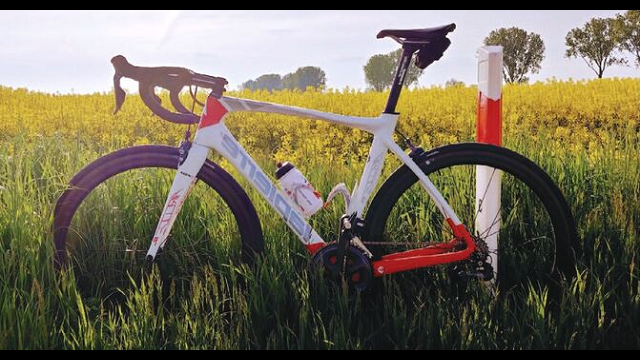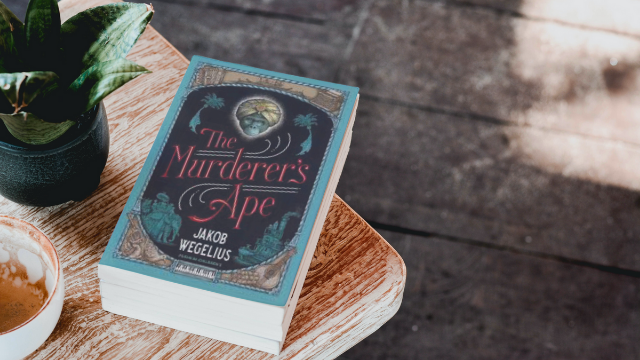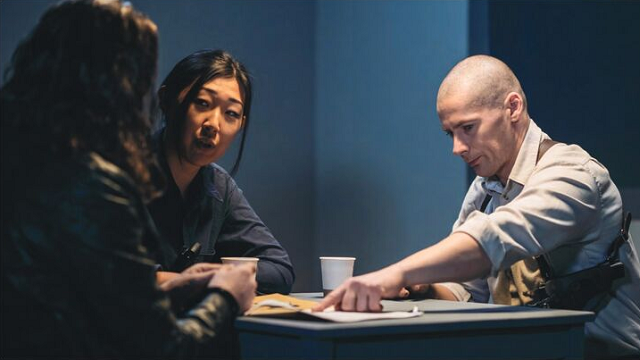-
QUALIFICATIONS
- For Linguists Worldwide
- For UK Public Services
- Preparation
- Policies & Regulation
-
MEMBERSHIP
- Join CIOL
- Professional Membership
- Affiliate Membership
- Chartered Linguist
- Already a member?
- Professional conduct
- Business & Corporate Partners
-
LANGUAGE ASSESSMENTS
- English
- All Other Languages
-
CPD & EVENTS
- Webinars & Events
- CIOL Conferences
- Networks
- CIOL Mentoring
-
NEWS & VOICES
- News & Voices
- CIOL eNews
- CIOL Awards
- The Linguist Magazine
- Jobs & Ads
-
RESOURCES
- For Translators & Interpreters
- For Universities & Students
- Standards & Norms
- CIOL & AI
- All Party Parliamentary Group
- In the UK
- UK Public Services
- Find-a-Linguist
Animals at work
By Anita van Adelsbergen
 Anita van Adelsbergen considers the many challenges of specialising in canine and equine translation
Anita van Adelsbergen considers the many challenges of specialising in canine and equine translation
When you are working on a translation and can’t find a certain word, Google will usually find your answer. But as an interpreter in the middle of a field, arena or paddock, that is a bit more difficult. And when it comes to equine interpreting, just knowing your vocabulary does not suffice; you need to understand the context in order to find the correct words. The term ‘riding hat’, for example, translates into Dutch and German as paardrijcap and die Reitkappe respectively. However, if the setting is polo, the hat becomes a helmet and the Dutch and German term would be helm.
‘Equestrian’ is, itself, a surprisingly broad specialisation. A Western rider (i.e. one who adopts the laid-back, cowboy-style way of riding that has found its way from the US to Europe) uses different equipment (or ‘tack’) to a dressage or jumping rider, so knowledge of the entire sport – and all its disciplines – is essential. It takes a lot of time to maintain such knowledge. There are even equine translators who specialise in just one discipline, such as carriage driving or horse racing.
All disciplines have their own lingo. In horse racing, for instance, there can be a ‘change of rider’ (Reiterwechsel in German) just before the start of a race, but this would never happen in a jumping or dressage setting, where rider and horse are entered as a team. Until 2017, the four finalists at World Showjumping championships had to ride each other’s horses in order to decide who won, but this should never be translated as Reiterwechsel.
To complicate matters, new disciplines keep emerging. Most people will be familiar with the more well-known sports, such as dressage (‘horse dancing’), showjumping and eventing, which is also referred to as three day eventing and combines dressage, showjumping and a cross-country course over natural fences. In Dutch, this used to be called military and, although it is now officially known as ‘eventing’ in both English and Dutch, many shows in the Netherlands still carry that name.
‘Dangerous’ animals
Working with and around animals can be dangerous unless you speak the animal’s language. We all know that it is not a good idea to stand behind a horse, as it may give you a (fatal) kick; people who speak ‘horse’ will be able to tell what kind of horse they are dealing with and read warning signals. An angry or distressed horse, for example, will flatten its ears in such a way that they are pointed backwards, rather than up or forwards. If a horse shows a lot of white in its eyes, this may indicate discomfort or aggression. Assessing the horse’s entire body language offers valuable information about its state of mind.
Horses that are for sale are usually young and lively. I once interpreted for a Dutch stallion owner and an Italian buyer in a cold and windy arena. The stallion did not appreciate the weather and wanted to go back inside. The owner did his best to sum up the horse’s positive traits and pedigree quickly. I struggled to hear due to the wind and was hesitant to get closer to the horse, as I had noticed the position of his ears and one of his hind legs, ready to lash out. Trying to come up with the correct technical words in Italian while jumping away from the horse at the right moments was an example of multitasking at its most extreme.
One might think that horse shows are less challenging in this regard. In most cases, an interpreter/translator will work in the show secretary’s office or alongside the VIP and media teams. In a busy VIP area, where guests may be more interested in the bottle on the table than the animals on display, interpreting becomes a listening challenge (or nightmare).
In such settings, it doesn’t matter how well you know your equestrian terminology, as guests may suddenly switch to other topics. At one of my first horse shows, having studied up on the right equestrian terminology, I found myself interpreting for a German talking to an Italian about his drilling machine business. Brushing up on your general knowledge will always be an important aspect of the work.
Understanding the field
The best foundation for carrying out linguistic duties in the animal field is personal experience. I have always had a Chow Chow and I have been riding for many years, working as an equestrian TV commentator for BBC Worldwide and the Dutch national broadcaster NOS. For me, the major challenge in equine translation has not so much been the terminology but the different ways in which the sports are organised in different countries. This mainly applies to national-level competitions, as international shows adhere to FEI (International Equestrian Federation) rules.
Knowledge and in-depth experience in the relevant countries are essential. Visiting horse shows, talking to riders and researching the national federation websites are worthwhile but time-consuming tasks. Compiling vocabulary lists from specialist dictionaries (equestrian, medical and veterinary) and books in both target and source languages is also useful.
In terms of canine translation, it takes time to familiarise yourself with all the dog breeds in both languages, especially as there are so many more now that cross-breeding has become the fashion. The Labradoodle (a cross between a Poodle and a Labrador), for example, comes in various sizes and types, and each breed may have its own vocabulary for coat types and colours.
Such detailed knowledge of one particular area can have its downsides. When I was interpreting for a shareholders’ meeting once, I mistakenly translated the Dutch word koersen as ‘racecourses’, although in the context of exchange rates it should have been ‘courses’. Keeping a wide scope, without blinders on, is the best way to go.
Pets and vets
As a translator specialising in animals, veterinary assignments are often thrown my way, so I decided to take specialised courses in medical translating. In Germany, the BDÜ (Federal Association of Interpreters and Translators) regularly offers medical webinars, while CIOL’s eCPD Webinars also has useful courses.
Another competitive industry is the cattle market. This is not my specialist area, but I have researched cows, sheep and pigs, and asked a local Dutch farmer to share his knowledge of looking after cattle, specific diseases and their remedies. I looked online for related texts in my target languages and started to develop my vocabulary from there. It was in this way that I learned all about cattle boluses (a kind of slow-release nutrient supplement) and bolus guns for one of my first cow-related translation assignments.
The pet industry has become a major player. Most of these assignments appear to come under the ‘general text’ category at first glance, but this industry has its own language. Just take a look at the products on offer: there are words you may never have heard before in everything from cat food ingredients to the description of dog toys.
The most difficult words for me have been the ones that describe noises. Toys for puppies often make specific sounds, and it is important to bear in mind that such products are bought by a wide target audience. To find the correct term in Dutch I often call friends with children who can advise on the best translation. Is knisperen a good word for ‘crackling’? Would everyone understand it or would knetteren be clearer to a wider audience? These kinds of discussions can take a lot of time, just to translate one sentence. Another challenge is that the space on the packaging is usually limited. With languages that need more words than others, this can be tricky.
Know your boundaries
A valuable lesson I have learned over the years is that interpreters need to have excellent self-knowledge and know their boundaries. I once worked at a Dutch seminar on surgical veterinary procedures. The one American guest was a host speaker, so we were seated in the front row. What I didn’t realise is that during his presentation there would be close-up pictures of dog and horse surgery. Fortunately, I did not have to interpret during his presentation and as I felt my stomach turning, I looked away to avoid being sick in front of the audience. At some point, a Dutch vet sitting behind me tapped me on the shoulder to let me know it was over. Understandably, I was the topic of conversation during the drinks afterwards, and the experience taught me to think twice before accepting assignments.
The internet, webinars and books are great resources for linguists wanting to specialise in any field. With regard to dogs, horses and animals, however, in order to provide a professional translation or interpretation, extensive personal experience with these animals is essential. My translation of the bolus gun text would not have been as good if I had not had the experience of actually administering a bolus to a cow myself!
Hear more about working with animals when Anita speaks at CIOL Conference 2020.
An experienced conference interpreter and translator specialising in equine and canine fields, Anita van Adelsbergen MCIL has also worked as a voiceover artist, sports commentator, presenter and producer on TV and radio. She is trilingual in Dutch, English and German and also works in Italian and French.
More
The Chartered Institute of Linguists (CIOL), Incorporated by Royal Charter, Registered in England and Wales Number RC 000808 and the IoL Educational Trust (IoLET), trading as CIOL Qualifications, Company limited by Guarantee, Registered in England and Wales Number 04297497 and Registered Charity Number 1090263. CIOL is a not-for-profit organisation.








